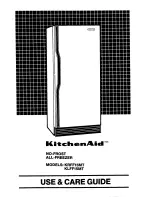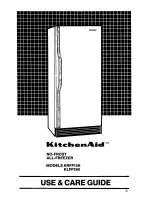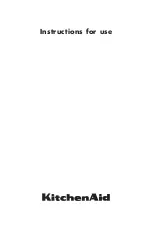
Start-up
Page EN-12
About climate categories
• Observe the specified ambient tempera-
ture (see “Intended use” on page EN-4).
Climate category means that the appliance
is intended for operation at the specified am-
bient temperature (see table ‘climate catego-
ries’). If the room temperature drops signifi-
cantly below this, the unit will not switch on
as often. This indicates that an unwelcome
increase in temperature may occur.
Set up the chest freezer and
align
1. Place the chest freezer on as flat and as
firm a base as possible.
2. Check the position with a spirit level.
3. Level out any unevenness on the ground
using both of the front levelling screws. To
do this
– close the lid.
– tilt the chest freezer slightly to the right.
– twist the levelling screws in or out until
the chest freezer is vertically level and
set the chest freezer straight back down
again.
4. Check the alignment with a spirit level.
When opening the lid, the chest freezer
should not shift.
Connecting the chest freezer
WARNING
Risk of electric shock!
Touching live parts may result in severe
injury or death.
■
Do not operate or continue to oper-
ate the appliance, if
–
it shows visible signs of damage,
e.g. the power cord is defective,
–
starts smoking or there is a smell of
burning,
–
it makes unfamiliar noises.
In such cases, pull out the mains plug
or unscrew/isolate the fuse and con-
tact our service department (see page
EN-24).
‘Climate categories’ table
Zone description
Code Definition
Extended temperate zone
SN
This refrigerator is designed for use at ambient tempera-
tures of +10 °C to +32 °C.
Temperate zone
N
This refrigerator is designed for use at ambient tempera-
tures of +16 °C to +32 °C.
Subtropical zone
ST
This refrigerator is designed for use at ambient tempera-
tures of +16 °C to +38 °C.
Tropical zone
T
This refrigerator is designed for use at ambient tempera-
tures of +16 °C to +43 °C.















































